Exploring the Power of ABA Therapy
Motor skill development plays a vital role in the overall growth and well-being of children, particularly those with Autism Spectrum Disorder (ASD). Applied Behavior Analysis (ABA) therapy provides a structured and tailored approach to enhancing both fine and gross motor skills in these children. This article delves into various strategies and methodologies within ABA that support motor skills development, offering insights for caregivers and professionals looking to empower children through improved mobility and coordination.
Understanding ABA Therapy's Role in Motor Skills Development
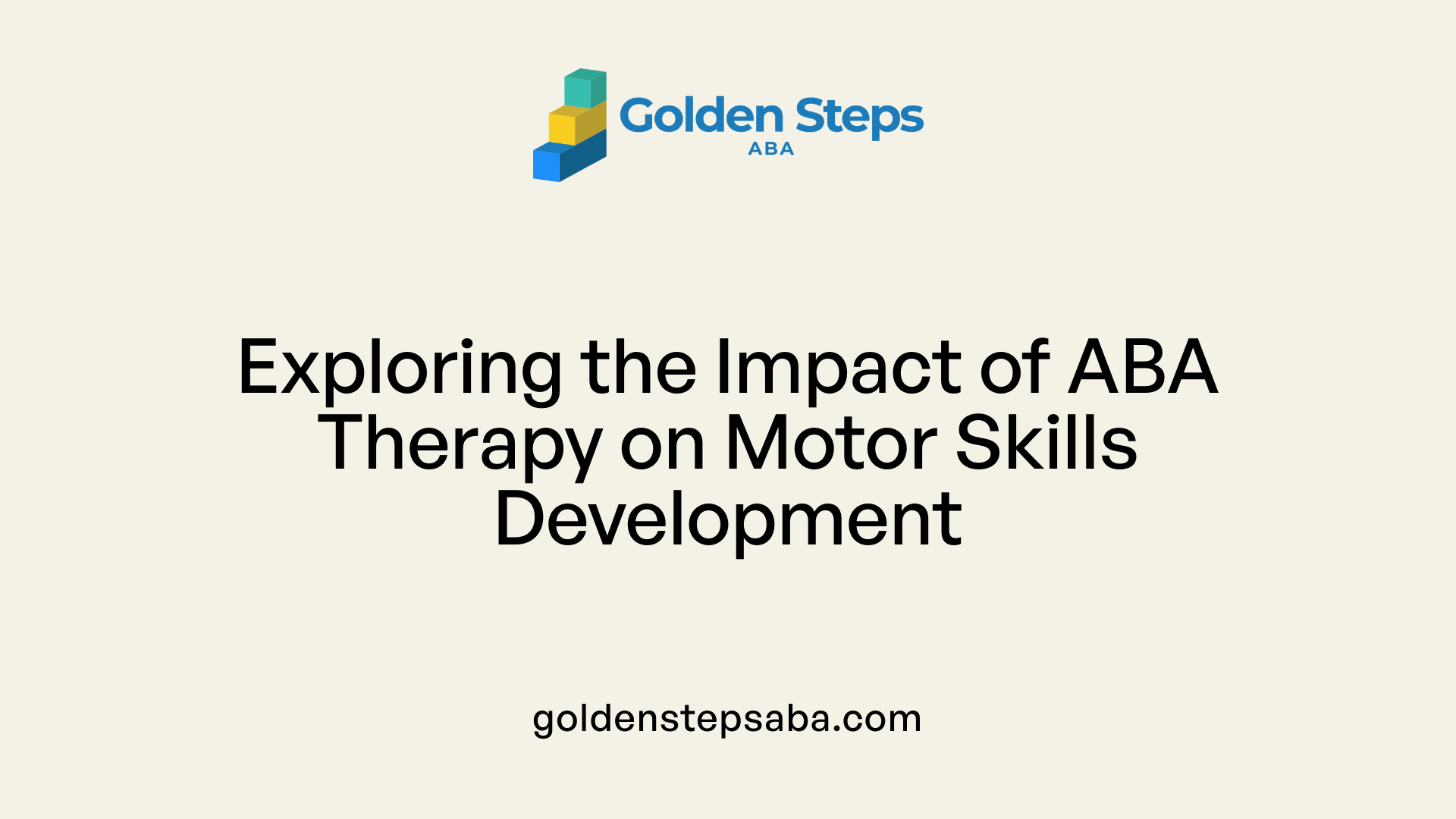
What role does ABA therapy play in developing motor skills in children with autism?
ABA therapy plays a crucial role in developing motor skills in children with autism by employing structured interventions tailored to each child's unique needs. This approach focuses on both fine and gross motor skills, setting long-term goals and breaking them down into manageable tasks.
For instance, before teaching a child to write their name, a therapist may first focus on teaching them how to hold a pencil correctly. Such step-by-step instruction makes complex tasks more achievable. Each child has a personalized treatment plan, often designed in collaboration with occupational therapists, who help enhance these plans and ensure they adequately address any sensory processing challenges.
Setting long-term and short-term motor skills goals
Goals set in ABA therapy are strategic and realistic. Therapists prioritize the child's unique challenges—such as fine motor skills like grasping objects and gross motor skills like running or jumping. Techniques such as task analysis, positive reinforcement, and Discrete Trial Training (DTT) are often employed to teach these skills effectively.
Collaboration with occupational therapists
Collaboration with occupational therapists is key to a child's progress. By working together, they can design interventions that not only improve motor planning but also incorporate fun, play-based activities to engage the child. Strategies like obstacle courses or simple exercises can significantly enhance muscle strength and coordination, promoting overall physical and cognitive development.
In summary, ABA therapy, supported by collaboration with other specialists, provides a comprehensive approach to motor skill development for children with autism, ultimately helping to enhance their quality of life.
Strategies and Techniques in ABA for Motor Skills
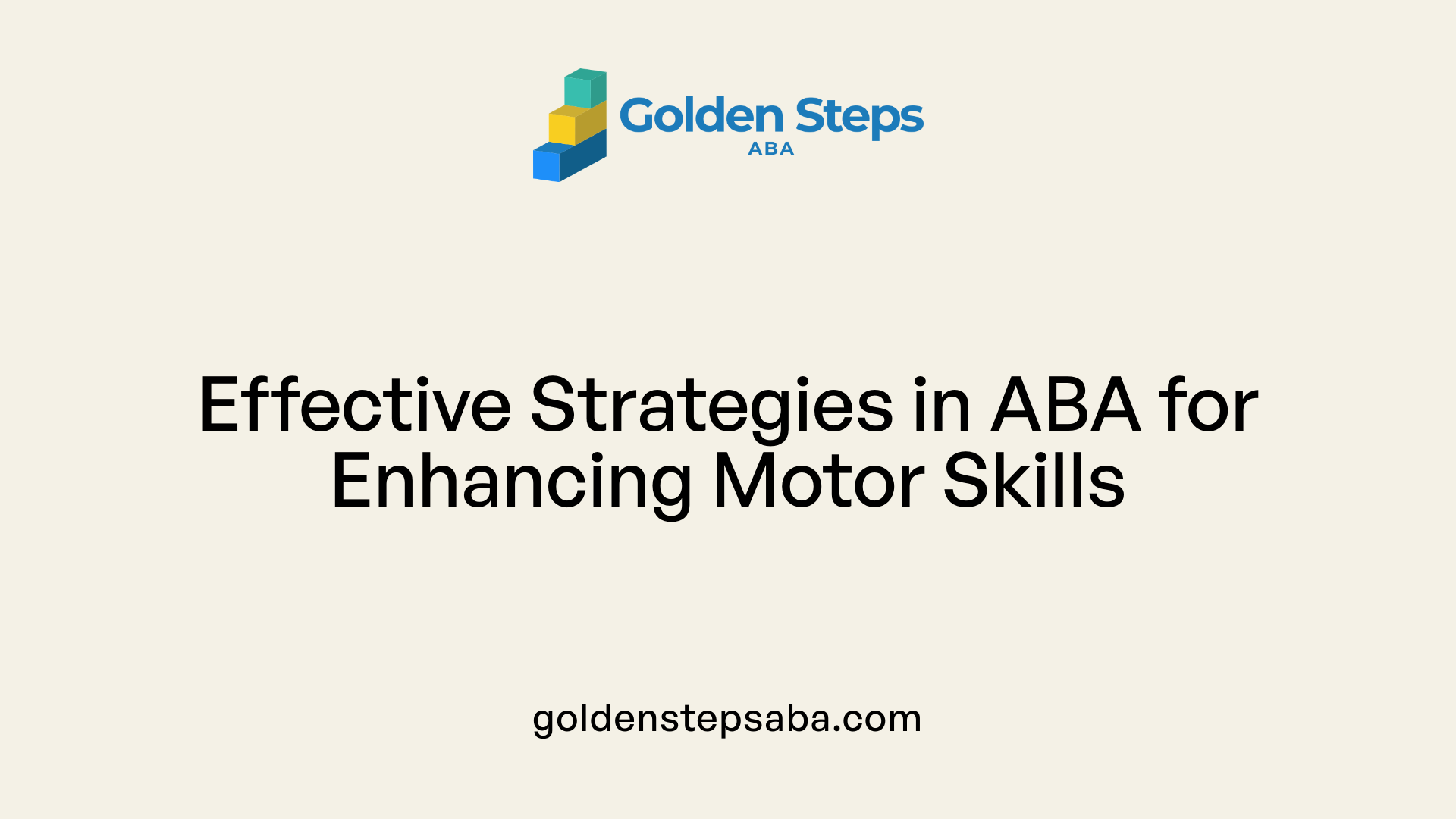
What strategies and techniques are used in ABA therapy to support motor skills development?
In Applied Behavior Analysis (ABA) therapy, strategies designed to support motor skills development include task analysis and customized treatment approaches tailored to each child's unique needs. This approach begins by breaking down larger goals into smaller, manageable tasks. For example, when teaching fine motor skills, a child might start with grasping a pencil correctly before moving on to writing their name.
Individualized treatment approaches
ABA therapists create individualized treatment plans that focus on specific motor skill deficits. They assess each child's abilities to develop realistic, achievable goals. This may include activities aimed at enhancing fine motor skills, such as drawing, coloring, or using scissors. For gross motor skills, children engage in dynamic activities like running and jumping.
Integration of play-based activities
Play-based activities form a vital part of ABA therapy. These activities not only make learning fun but also promote muscle strength and coordination. For instance, wall push-ups or obstacle courses are adapted as playful exercises to enhance gross motor skills. Such engaging methodologies paired with collaboration between ABA and occupational therapists lead to a holistic approach, ensuring comprehensive support for motor skills development.
Here's a quick overview of commonly used techniques in ABA therapy:
| Technique | Focus Area | Description |
|---|---|---|
| Task Analysis | Fine and gross motor skills | Breaking down skills into manageable steps. |
| Positive Reinforcement | All skill levels | Encouraging repetition of desired behaviors. |
| Discrete Trial Training (DTT) | Skill acquisition | Teaching in small, structured steps via repetition. |
| Natural Environment Teaching (NET) | Real-life application | Using real-world scenarios to reinforce learning. |
| Social Skills Groups (SSGs) | Social interaction | Practicing motor skills while promoting peer engagement. |
By implementing these strategies, ABA therapy offers a structured yet playful setting for children with autism, facilitating significant improvements in their motor skills.
Educational Resources and Support for Implementing ABA
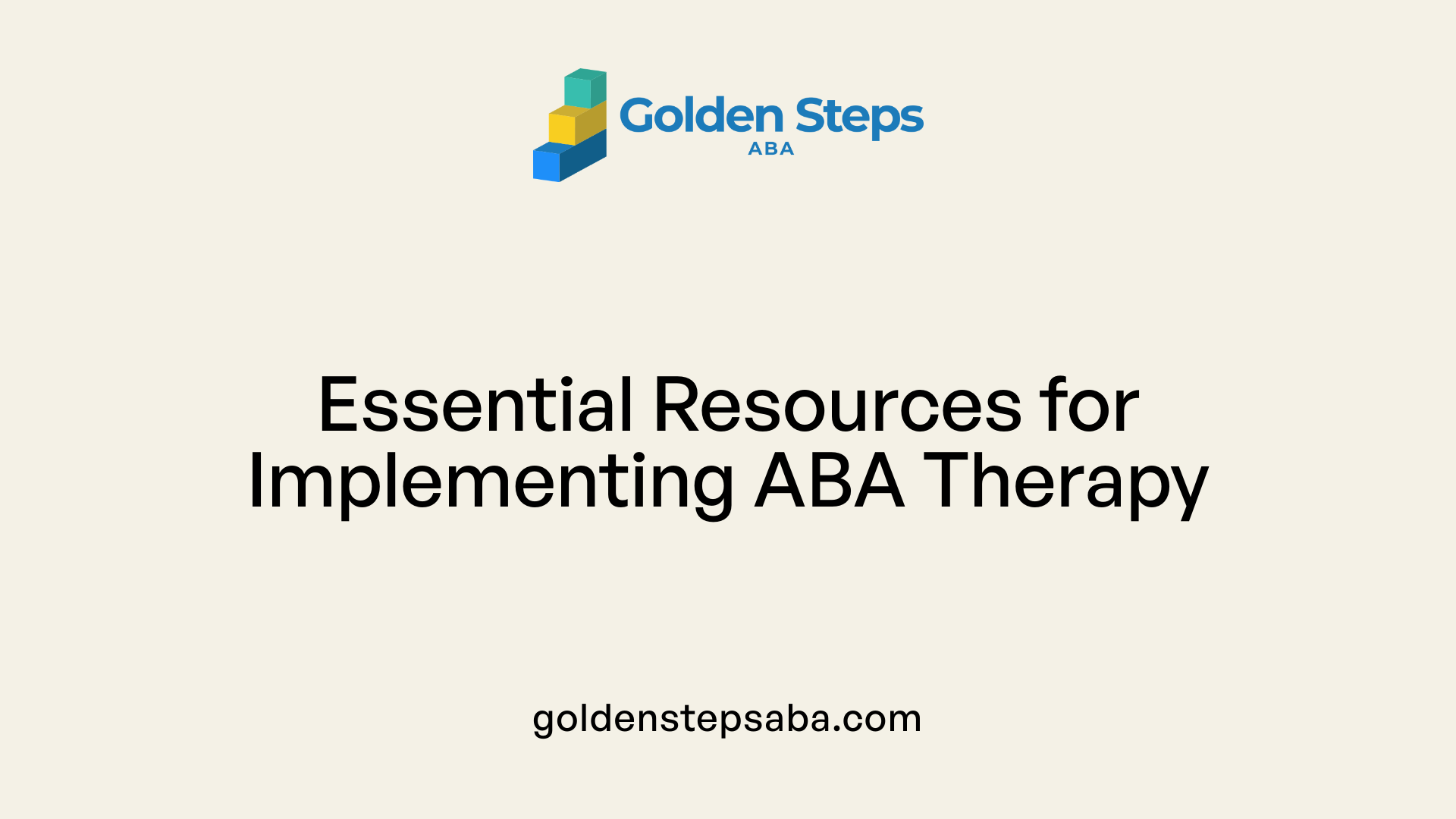
What educational resources are available for caregivers and professionals to implement ABA therapy for motor skill improvement?
There are numerous educational resources and training programs available for caregivers and professionals to effectively implement ABA therapy aimed at improving motor skills in children with autism. Early Autism Services offers comprehensive training that focuses on assessing individual needs and developing tailored treatment plans that enhance both fine and gross motor skills.
These training programs emphasize breaking down complex tasks into smaller, manageable steps. For instance, a child might first focus on mastering how to hold a pencil correctly before advancing to writing their name. This step-by-step approach is fundamental to building confidence and competence in various skills.
Collaborative therapy approaches
Collaboration with occupational therapists can significantly enhance the effectiveness of ABA therapy. Occupational therapists focus not only on fine motor skills but also assist in developing gross motor skills, such as walking and participating in sports activities. Together, these therapeutic approaches create a holistic support system for children, enabling more robust motor skill development through tailored interventions.
Promoting independence in everyday activities
In addition to structured therapies, social skills groups allow children to practice motor skills within a group context, fostering social interaction. These environments often incorporate play activities, making learning enjoyable while promoting muscle strength and endurance. Ultimately, through such interventions, children gain the skills necessary to engage in daily activities, enhancing their independence and improving their overall quality of life.
Differentiating Occupational Therapy and ABA in Skill Development
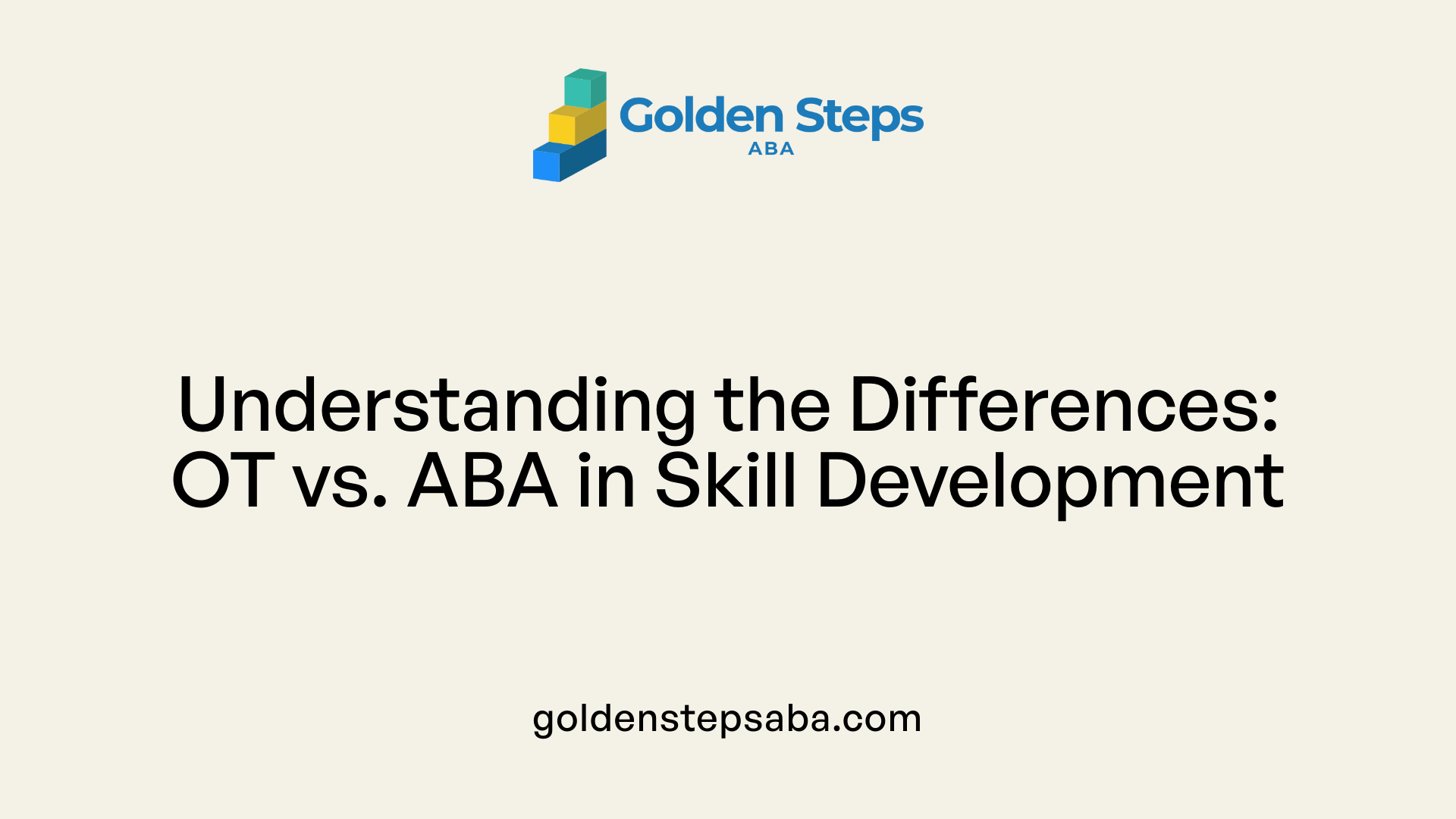
Occupational Therapy vs. ABA Therapy
Occupational Therapy (OT) and Applied Behavior Analysis (ABA) therapy differ significantly in their approaches to developing fine motor skills. OT emphasizes playful activities that encourage children to engage in everyday tasks like buttoning shirts or using utensils, which helps foster emotional growth and social interaction. This client-centered approach assesses individual needs and creates personalized intervention plans aimed at improving manual dexterity and coordination.
Direct vs. Behavior Modification Approaches
In contrast, ABA therapy is structured around behavior modification and the skill acquisition process. It focuses on analyzing and modifying behaviors and skills through a systematic approach. The techniques in ABA, such as Discrete Trial Training and Natural Environment Teaching, help in acquiring skills indirectly related to fine motor development, rather than addressing fine motor skills explicitly.
Focus on Manual Dexterity and Coordination
Both therapies ultimately aim to improve children's capabilities, but they employ distinct pathways to achieve the goal. OT’s playful engagement enhances motor skills through everyday interactions, while ABA’s behavioral strategies lay the groundwork for skill acquisition in structured environments. Understanding these differences can greatly impact how children with Autism receive support for developing essential fine motor skills.
The Role of Play in ABA Therapy for Motor Skills
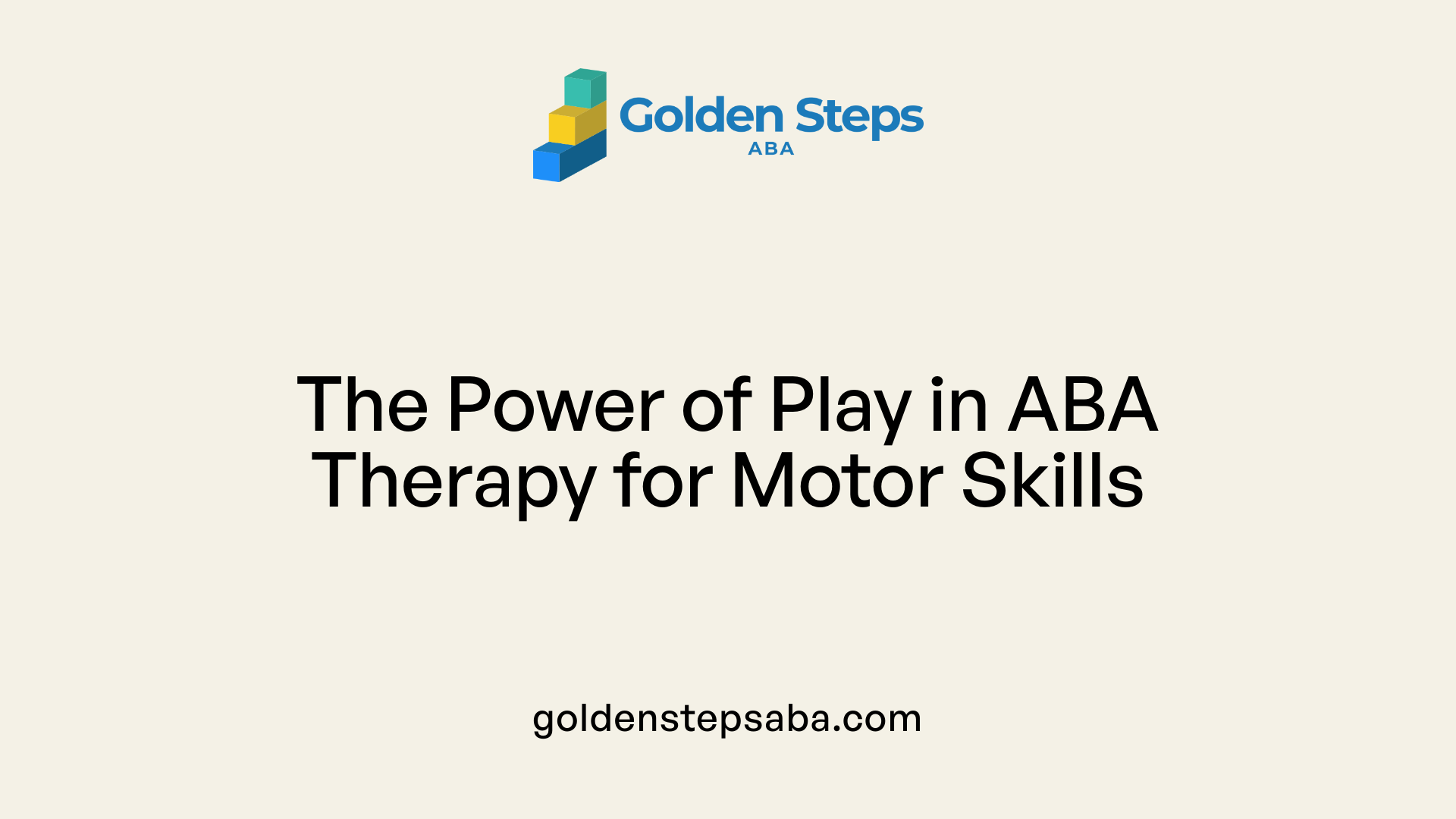
Can play support motor skill development in children, and how does it relate to ABA therapy?
Play is fundamental for developing both fine and gross motor skills in children. It offers a natural context for practicing essential skills such as coordination, control, and social interaction. Within ABA therapy, play is not only encouraged but actively incorporated through various methods.
One technique, Discrete Trial Training (DTT), breaks down play activities into manageable steps. For instance, grasping a toy can be taught systematically, allowing children to master each component before moving on. Meanwhile, Natural Environment Teaching (NET) emphasizes real-world learning by integrating skills into everyday situations, enhancing practical application and relevance.
In addition, Pivotal Response Training (PRT) encourages child-led play, leveraging children’s interests to boost motivation and foster social interactions. By intertwining play with structured interventions, ABA therapy effectively supports children’s motor skill development and addresses challenges such as motor planning difficulties.
Conclusions on ABA Therapy and Motor Skill Development
ABA therapy stands out as a pivotal approach in addressing the unique motor skills challenges faced by children with autism. By setting achievable goals, breaking them into manageable components, and incorporating enjoyable play, ABA fosters engagement and skill acquisition. Combining ABA with occupational and physical therapies enhances its efficacy, paving the way towards improved independence and quality of life for children with autism. The outlined strategies and educational resources give caregivers and professionals actionable insights to empower these children, helping them navigate their world with greater confidence and competence.
References
- ABA Therapy for Developing Motor Skills - The Place
- Fine & Gross Motor Skills | Early Autism Services
- Developing Gross Motor Skills with Autism Therapy
- How Children With Autism Could Learn Fine And Gross Motor Skills
- Occupational Therapy vs ABA: 4 Key Differences
- The Difference Between ABA Therapy and Occupational Therapy
- ABA therapy vs occupational therapy - Ability Innovations
- ABA Therapy for Developing Motor Skills - The Place

